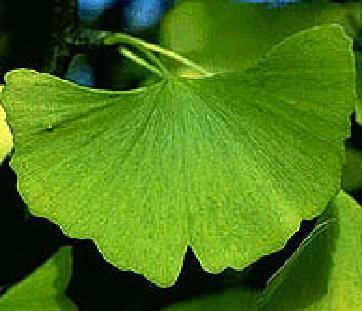The Ginkgo Biloba, also known as the Maidenhair tree, is unique in the plant world, having no close genetic relatives. This hardy and long-living tree is native to China and is the country’s national tree as well as being the official tree of the city of Tokyo. Its leaves are a beautiful fan-shape with veins radiating out to the outer edges. This striking shape makes the ginkgo leaf a popular graphic.
The ginkgo tree does not only have good looks going for it: the leaf extract has long been used as a memory enhancer. For thousands of years, this herbal supplement has been used in Asia to treat poor memory, dementia, and poor circulation. Some research shows that ginkgo leaf extract contains terpenoids, which improve blood flow. And studies are just beginning to test the effectiveness of the ginkgo leaf in treating vitilgo.
Perhaps the most exciting potential of ginkgo leaf extract (for us anti-aging advocates, anyway) is its anti-oxidant properties in the form of flavonoids. In the skin, free radicals activate enzymes that break down collagen (the skin’s supporting structure), leading to wrinkles and fine lines. Anti-oxidants protect against the cell damage that can accelerate the appearance of these signs of aging. Ginkgo leaf extract is also an impressive anti-inflammatory, great news for those who suffer from acne and rosacea.
Expect to see ginkgo leaf extract in more skin care treatments soon. For now, you’ll find it as one of the key ingredients in Apothekari’s Cloud Nine Foaming Cleansing Crème. The anti-oxidant properties fight against everyday environmental stressors and free radical damage while the anti-inflammatory benefits make this cleanser suitable for those with sensitive or acne-prone skin.
One last note about the beautiful ginkgo tree: its hardiness and ability to resist disease and insects make it one of the longest living trees on earth. Fossils of the ginkgo biloba go back 270 millions years. With a history like that, is it any wonder we’re excited about its anti-aging potential?



